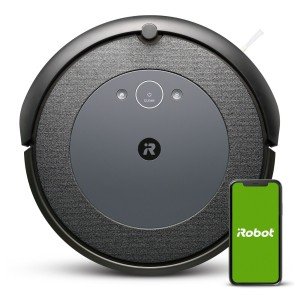The Evolution of Robot Hoovers: Revolutionizing Home Cleaning
Robot hoovers, likewise understood as robotic vacuum, have transformed how people approach home cleaning jobs. Initially introduced in the late 1990s, these self-governing makers have actually evolved rapidly due to developments in innovation, synthetic intelligence, and artificial intelligence. best robot vacuum for large house Robot Vacuum Mops , they are equipped with a variety of functions that make them extremely efficient in keeping tidiness in living spaces. This article checks out the history, operating, benefits, and future of robot hoovers.
The History of Robot Hoovers
The principle of robotic vacuums dates back to the 1970s, but it wasn't up until the launch of the Roomba by iRobot in 2002 that they acquired traditional attention. The Roomba was created to instantly navigate different surfaces, preventing challenges while efficiently cleaning floorings. Since then, a number of significant advancements have occurred, consisting of:
| Year | Development |
|---|---|
| 1996 | First model robotic vacuum cleaner established by a Japanese business. |
| 2002 | iRobot introduces the Roomba, mass popularizing robotic vacuums. |
| 2004 | Intro of the first Roomba with a dirt detection sensor. |
| 2011 | Release of designs with wireless abilities and mobile phone integration. |
| 2020 | Advanced designs including AI, improved navigation systems, and mopping abilities. |
How Robot Hoovers Work
Robot hoovers run on a combination of sensors, cameras, and algorithms that allow them to tidy effectively. Key components of these devices include:
Sensors:
- Obstacle Avoidance Sensors: Detect walls, furnishings, and even stairs, preventing crashes and falls.
- Dirt Detection Sensors: Identify locations that require more comprehensive cleaning.
Navigation:
- Gyroscopes: Help determine the robot's orientation and movement.
- Cams and Lidar: Enable mapping of the home environment to develop optimum cleaning courses.
Cleaning Mechanisms:
- Vacuum Motors: Generate suction to get dirt and particles.
- Brush Rollers: Agitate dirt out of carpets for deeper cleaning.
Power Supply:
- Batteries: Rechargeable lithium-ion batteries provide the essential power for extended cleaning cycles.
Interface:
- Mobile Apps and Smart Home Integration: Users can arrange cleanings, screen efficiency, and control the robot remotely.
Advantages of Robot Hoovers
Robot hoovers use numerous benefits, making them an attractive option for modern families:
- Time-Saving: Automated cleaning permits users to concentrate on other tasks while the robot efficiently cleans up floors.
- Convenience: Many models can be scheduled for cleaning sessions, making sure that homes stay tidy without manual effort.
- Ease of access: Ideal for people with movement difficulties or hectic way of lives, allowing easier home maintenance.
- Constant Cleaning: Regular, automated cleansings reduce the accumulation of dirt and allergens, adding to a much healthier living environment.
- Smart Technology: Integration with smart home systems enables increased control and personalization.
Limitations of Robot Hoovers
Regardless of their benefits, robot hoovers come with particular limitations:
- Navigation Challenges: They might have a hard time in chaotic areas or with certain floor types such as high-pile carpets.
- Battery Life: Most models require routine charging, which can limit cleaning period.
- Maintenance: Regular cleaning of filters, brushes, and emptying dust bins is needed for optimal performance.
- Price: Advanced models can be pricey compared to traditional vacuum cleaners.
The Future of Robot Hoovers
As technology continues to develop, the future of robot hoovers looks appealing. Expected improvements include:
- Improved AI: Enhanced algorithms will permit much better things recognition and dynamic mapping of areas.
- Hybrid Models: Integration of vacuuming and mopping capabilities in one gadget will offer an extensive cleaning solution.
- Increased Autonomy: Future designs might navigate even the most complicated environments without human intervention.
- Sustainability: Battery innovation improvements will cause longer-lasting, more energy-efficient robots.
Often Asked Questions (FAQs)
1. Are robot hoovers effective for animal hair removal?
Yes, numerous robot hoovers are specifically designed to deal with animal hair with effective suction and specialized brushes that decrease tangling.
2. How do robot hoovers navigate around furniture?
Robot hoovers use a mix of sensors and cams to find obstacles, enabling them to browse around furnishings and prevent accidents.
3. Can robot hoovers tidy carpets?
A lot of modern robot hoovers work on both tough floorings and carpets. It is recommended to examine the specs of individual models for particular efficiency.
4. Do robot hoovers require programs?
Many robot hoovers come with user-friendly apps that enable owners to set schedules and tailor cleaning choices, making programming uncomplicated.
5. How much do robot hoovers cost?
Costs for robot hoovers differ commonly, ranging from ₤ 200 to around ₤ 1,500, depending on functions and brand name.
Robot hoovers have come a long method given that their inception, providing an efficient and practical cleaning solution for contemporary families. Their increasing ability and intelligence make them a useful choice for people aiming to streamline their cleaning routines. As innovation continues to advance, robot hoovers will likely become even more capable, supplying additional features that cater to the evolving requirements of users. Their journey from novelty to need underscores a basic shift in how society approaches home maintenance, marking a substantial turning point in the crossway of technology and every day life.

